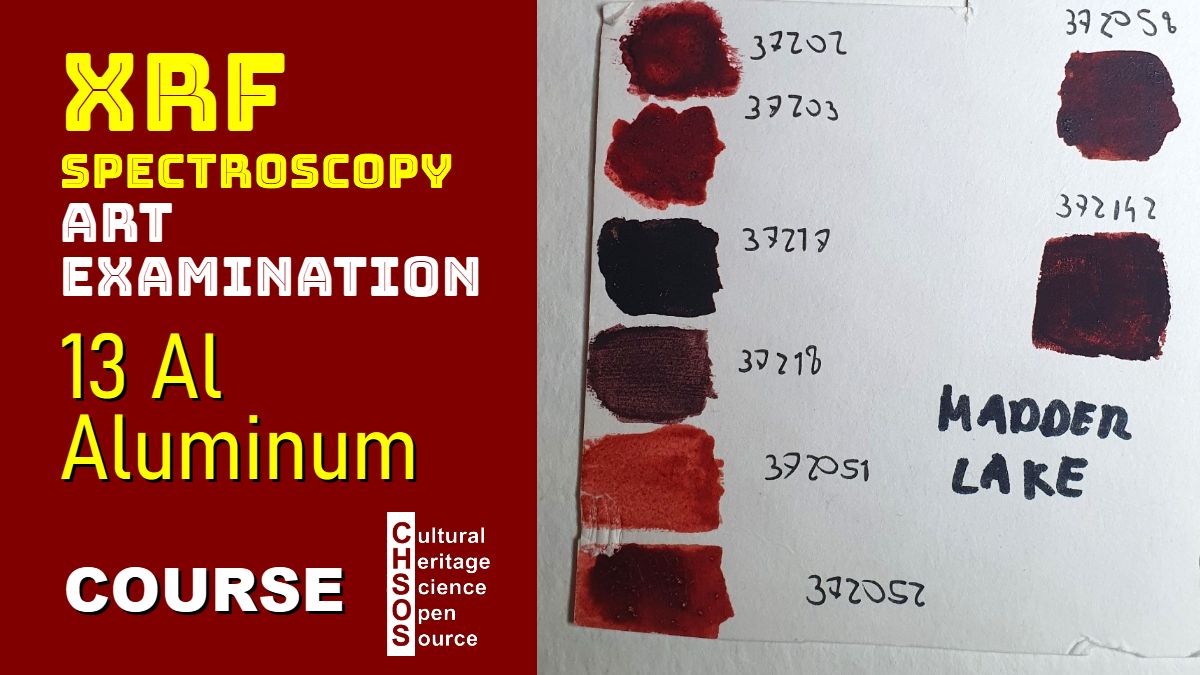
This lesson focuses on the identification of aluminum, exploring the case of madder lake. Aluminum, with an atomic number of 13, can be detected by its K-alpha line at 1.5 keV. Understanding how aluminum is used in madder lake formulations helps in analyzing historical and modern recepes for this and other lakes. The lesson explores different types of madder lake and their elemental compositions to determine the role of aluminum and other elements used as mordants.
Objectives
- Identify the presence of aluminum in madder lake.
- Compare aluminum signals in different reference materials, such as pure aluminum and alum.
- Analyze variations in madder lake compositions based on different mordants.
Materials
- Pure aluminum reference sample
- Alum (potassium aluminum sulfate) reference sample
- Various Madder Lake pigment samples
Lesson Plan
- Introduction to Aluminum Detection
- Explain the K-alpha line of aluminum at 1.5 keV.
- Discuss attenuation effects due to air path and transmission calculations.
- Baseline Measurements
- Analyze pure aluminum and alum samples.
- Madder Lake Analysis
- Introduce the role of mordants in lake pigments formation.
- Examine different Madder Lake samples and their elemental fingerprints.
- Identify other elements (potassium, calcium, tin, iron, phosphorus, sulfur, copper) indicating alternative mordants.














